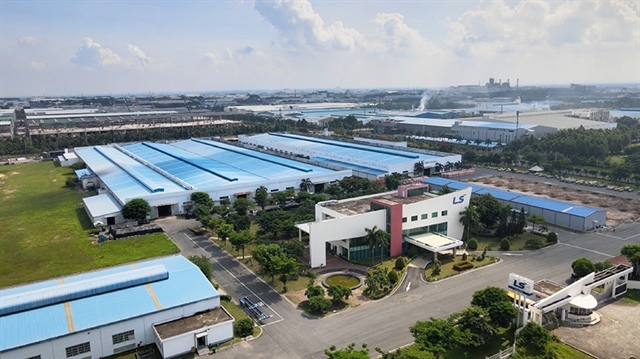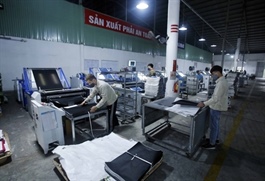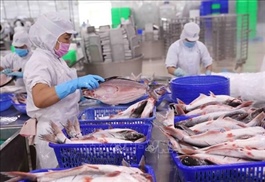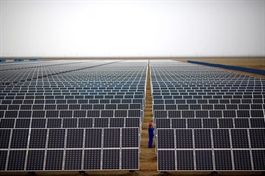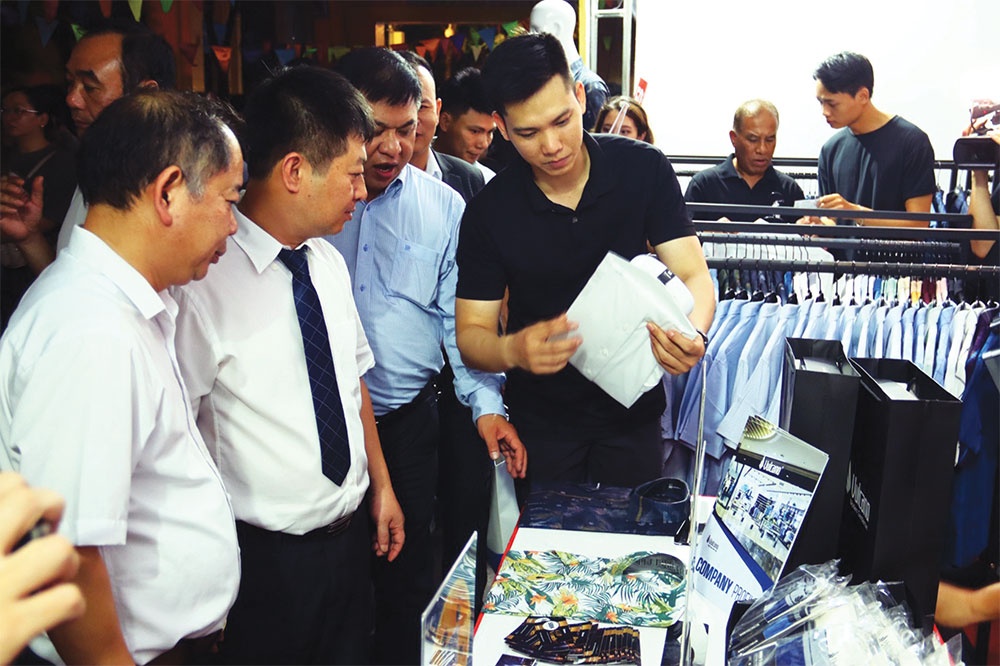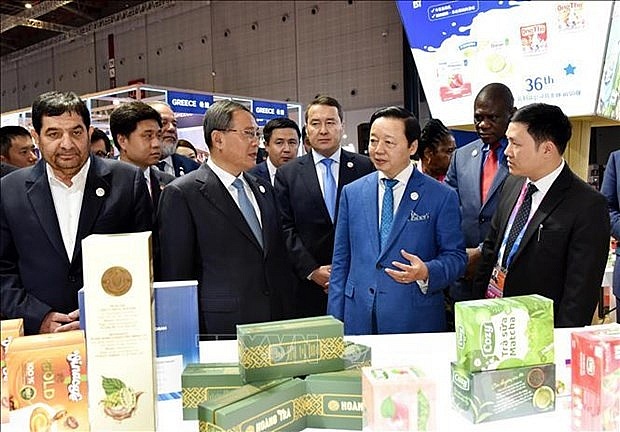Vietnam’s January-October trade plunge raises concern despite record trade surplus
Vietnam’s January-October trade plunge raises concern despite record trade surplus
Vietnam generated US$557.9 billion in import-export turnover in January-October, tumbling $60 billion year on year, causing experts to worry about a possible decline in exports for the second time since 2009 although the country enjoyed a trade surplus of $24.6 billion in the period.
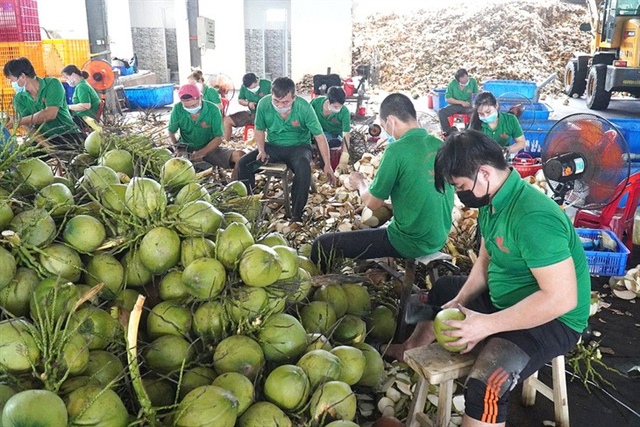
Workers process and package dried jackfruit for export at Vietnamese dried fruit manufacturer Vinamit in Binh Duong Province, southern Vietnam. Photo: Quang Dinh / Tuoi Tre |
The country exported $291.2 billion worth of products and spent $266.67 billion on imports in the ten-month span, falling 7.1 and 12.3 percent, respectively, over the year-ago period, according to the General Statistics Office.
The trade surplus of $24.6 billion was well above the $9.56 billion mark over the same period last year, which was attributed to a plunge in imports.
Luu Manh Tuong, deputy head of the General Department of Vietnam Customs, informed that phones and phone parts; machinery, equipment, tools, and accessories; plastic materials; iron and steel; fabrics; and electronic products and accessories reported the sharpest decline in import turnover.
In the year to September 30, there were 10 commodities posting an import turnover drop by over $1 billion each.
In particular, the import revenue of phones and phone parts plummeted by $9.7 billion; machinery, equipment, tools, and accessories, by over $4 billion; plastic materials, by $2.64 billion; and iron and steel, by $2 billion.
It is good to run a trade surplus but Vietnam’s in the January-October period causes concerns as its imports slipped sharply while the Southeast Asian country's economy depends on outsourcing and assembling, Dr. Le Quoc Phuong, former deputy director of the Vietnam Industry and Trade Information Center under the Ministry of Industry and Trade, told Tuoi Tre (Youth) newspaper.
Vietnam’s key export earners, such as phones, electronic accessories, textiles and garments, and footwear, need imported accessories. The import fall will definitely affect shipments in the future, Phuong added.
Phuong emphasized that the global economy has been facing even more difficulties than during the COVID-19 pandemic due to falling demands given high inflation, the Russia-Ukraine and Israel-Hamas conflicts, and global supply chain disruptions, leading to a slide in Vietnam’s exports.
“The export growth may be negative this year and this will be likely the second year the economy will report a decline in exports since Doi Moi [economic reforms initiated in Vietnam in 1986 with the goal of creating a socialist-oriented market economy]. We incurred the first plunge in exports in 2009,” Phuong noted.
Associate Professor Dr. Pham Tat Thang from the Vietnam Institute of Strategy and Policy for Industry and Trade shared the view, saying that the global economy had been unhealthy over the past 10 months with plunging purchasing power.
Vietnam’s key partners are encountering multiple hardships, while local production’s recovery remains slow.
The number of domestic enterprises promptly responding to the market volatility is modest, especially labor-intensive ones, and the production recovery cost more than expected, all resulting in a decline in exports over the ten-month period.
Deputy Minister of Agriculture and Rural Development Phung Duc Tien said a surging trade surplus was meaningful to the agriculture sector and the country’s socio-economic development as a whole.
The high trade surplus helps increase the country’s foreign currencies to import equipment for its industrialization and modernization, Tien added.
With experience from previous years, the Ministry of Agriculture and Rural Development will ask its subordinates and localities to focus on production to have materials for export in the last months of the year in a bid to reach the export target. Thus, the trade surplus will definitely be higher, Tien said.
According to Tran Anh Tuan, head of the Ho Chi Minh City business management and innovation board, the record trade surplus should be put in the context of declining import-export.
Trade surplus helps stabilize the foreign exchange market. However, Vietnam’s economic openness seemed to decrease, thus raising concerns, Tuan said.
Besides the falling global demands, made-in-Vietnam goods’ competitiveness remains modest.
The order contraction of apparel, footwear, and wood enterprises have sent imports falling.
Tuan recommended investing further in high-skilled manpower and technology transfer, improving the connectivity between small and medium enterprises and FDI firms, and supporting local businesses’ input and output.
Vietnam has issued many support policies for enterprises but they are still ineffective and not methodological. It should focus on processing and manufacturing and hi-tech sectors as well as small and medium enterprises to ensure sustainable development, Tuan said.
|
|
| Workers process fresh coconuts for export in Vietnam. Photo: Mau Truong / Tuoi Tre |
Solutions for recovering exports
In the long term, if Vietnam continues maintaining the dependence on outsourcing and assembling, its economy will not benefit much from exports.
It should convert to a high-localization industry with a high technology content, according to former deputy director of the Vietnam Industry and Trade Information Center Phuong.
Some other economists said Vietnam should concentrate on boosting exports of its strength, such as agricultural products as the prices of such products are high.
However, it needs to pay more attention to the product quality. As a case in point, the Southeast Asian country should strive to get the European Commission’s fishing ‘yellow card’ warning removed as seafood is a key export earner for Vietnam.
The nation should also foster exports, specifically agricultural products, with a high added value.
Vietnam is the second-largest coffee exporter in the world, following Brazil, but it mainly ships raw products, fetching high revenue but extremely low added values, according to experts.
Meanwhile, Thang from the Vietnam Institute of Strategy and Policy for Industry and Trade also suggested strong and effective support policies for export enterprises, such as those to help exporters improve technology.




